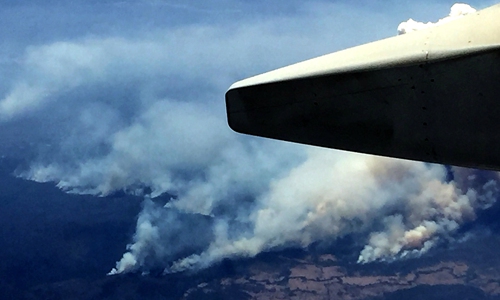Catastrophic bushfire conditions in South Australia to persist for months: forecast

The aerial photo taken on Tuesday shows a bushfire rages in the Richmond Valley in New South Wales, Australia. Bushfire-prone Australia has seen a horrific start to its fire season, which scientists say is beginning earlier and becoming more extreme as a result of climate change. Photo: AFP
South Australia (SA) has been warned that the catastrophic fore conditions could persist.
According to a long-range prediction released by the Bureau of Meteorology (BOM), much of South Australia is expected to endure above-average heat and below-average rainfall for months.
"Daytime temperatures for January to March 2020 are likely to be warmer than average for almost all of Australia," it said.
"February to April is also likely to be warmer than average Australia-wide... with warmer January days likely for the north and east, and along much of the coastline of SA and WA (West Australia)."
The bureau forecast a wetter January in "the western half of SA" but said that the rest of the state can expect little or no rain.
South Australia has been one of the states hit hardest by the ongoing nationwide bushfire crisis.
More than 160,000 hectares of Kangaroo Island, one third of which is a protected wildlife reserve, has burnt so far and two people were confirmed to have been killed on the island on Saturday.
"People are traumatized - wives, husbands and kids walked out of their houses on Friday, and came back to nothing," Michael Pengilly, mayor of Kangaroo Island, told reporters on Sunday.
"They've just got nothing, it's all gone."
Grave fears are held for the koalas of Kangaroo Island, with 25,000 - half the population there - feared dead.
Research published by the University of Adelaide in July 2019 revealed that koalas on Kangaroo Island were crucial to the long-term survival of the iconic species because they are entirely free of chlamydia.
The disease, which affects 46 percent of koalas on the mainland, causes blindness, infertility and death.